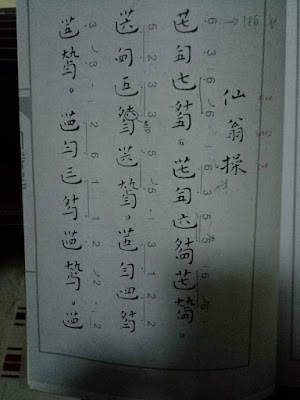One reason that I like the Guqin is because it's not really a "performance" instrument, per se, but rather more of a meditative instrument played alone in a room or out on a hillside somewhere. It is studied as a way of improving and fulfilling the student. It is studied as a sort of 功夫 (Kung Fu), with the purpose of developing discipline and bringing clarity of thought. Perhaps I like this sort of instrument simply out of a fear of performance and the possibility of failure in front of a live audience. Regardless, it is an art, and despite it usually being a solitary one, art at times requires an audience and interpretation, or at the least an evaluation...
Over the past few months, I have been taking part in weekly lessons as part of the Guqin Society at the college where I teach. As a fulfillment of the "course," each student is required to participate in 雅集 (ya3ji2), which is basically a more formal "performance" of the piece that you have learned. The audience, in my experience, is still just your classmates, as it has been all along, but there is still somehow an added element of stress. This was my first time playing a piece in front of a group of live listeners, and as you can see, my playing still largely lacks any real musical quality (despite the fact that I've been learning this instrument for over a year now).
The song played is called 湘江怨 (xiang1jiang1yuan4). The first two characters are the name of a river, the Xiangjiang river in Hunan; and the last character means "lament."
<https://baike.baidu.com/item/湘江怨/819704 >























